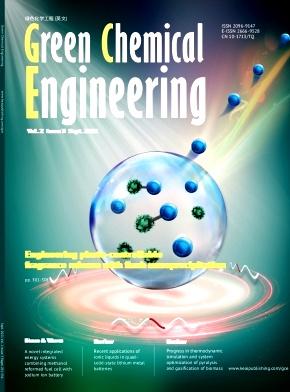A perspective on transforming fats, oil, and grease (FOG) into hydrogen: insights on steam reforming catalysts and the case study of Hong Kong using techno-economic analysis and life cycle assessment
IF 7.6
Q1 ENGINEERING, CHEMICAL
引用次数: 0
Abstract
The increasing demand for sustainable energy has intensified interest in hydrogen production from renewable sources. Although catalytic steam reforming of methane and other feedstocks has been extensively investigated, research on utilizing fats, oils, and grease (FOG) remains limited and dispersed. This study offers a comprehensive analysis of steam reforming catalysts for FOG conversion, concentrating on nickel-based, noble metal, and metal oxide-supported catalysts initially developed for methane, waste cooking oil, and glycerol. Catalyst performance is assessed in terms of activity, stability, cost, and environmental impact, addressing sustainable catalyst design and recycling principles. FOG management strategies are also explored, with a particular emphasis on Hong Kong, where FOG interception is crucial due to infrastructure constraints. Unlike cities where food waste is ground and flushed through extensive sewer systems, Hong Kong necessitates localized FOG removal to prevent costly blockages and environmental harm. A techno-economic analysis demonstrated the feasibility of producing H2 at a selling price as low as USD 3/kg H2, with a carbon capture potential of 0.40 kg CO2-eq/kg H2. Life cycle assessment (LCA) further confirmed environmental benefits, indicating the potential to capture 0.14 kg CO2 per kg of FOG processed. Additionally, the study identifies opportunities for cost reduction through more efficient FOG acquisition and valorization, which can enhance carbon savings and economic viability. Overall, this work underscores the potential of FOG as a renewable feedstock and delineates key research directions for catalyst development and integrated waste-to-hydrogen systems.

将油脂转化为氢气的展望:蒸汽重整催化剂的见解及以香港为例,运用科技经济分析及生命周期评估
对可持续能源日益增长的需求增强了人们对可再生能源制氢的兴趣。尽管甲烷和其他原料的催化蒸汽重整已经得到了广泛的研究,但利用脂肪、油和油脂(FOG)的研究仍然有限且分散。本研究提供了FOG转化的蒸汽重整催化剂的综合分析,集中在镍基、贵金属和金属氧化物支持的催化剂上,最初是为甲烷、废食用油和甘油开发的。催化剂性能从活性、稳定性、成本和环境影响等方面进行评估,解决可持续催化剂设计和回收原则。此外,还探讨了光纤陀螺管理策略,特别强调香港,由于基础设施的限制,光纤陀螺拦截至关重要。不同于城市的食物垃圾被碾碎并通过广泛的下水道系统冲走,香港需要局部清除雾雾,以防止代价高昂的堵塞和环境危害。一项技术经济分析表明,以低至3美元/千克H2的价格生产氢气是可行的,每千克H2的碳捕集潜力为0.40千克二氧化碳当量。生命周期评估(LCA)进一步证实了环境效益,表明每处理1千克雾可捕获0.14千克二氧化碳。此外,该研究还确定了通过更有效的FOG获取和定价来降低成本的机会,这可以提高碳节约和经济可行性。总的来说,这项工作强调了FOG作为可再生原料的潜力,并描绘了催化剂开发和综合废物制氢系统的关键研究方向。
本文章由计算机程序翻译,如有差异,请以英文原文为准。
求助全文
约1分钟内获得全文
求助全文
来源期刊

Green Chemical Engineering
Process Chemistry and Technology, Catalysis, Filtration and Separation
CiteScore
11.60
自引率
0.00%
发文量
58
审稿时长
51 days
 求助内容:
求助内容: 应助结果提醒方式:
应助结果提醒方式:


